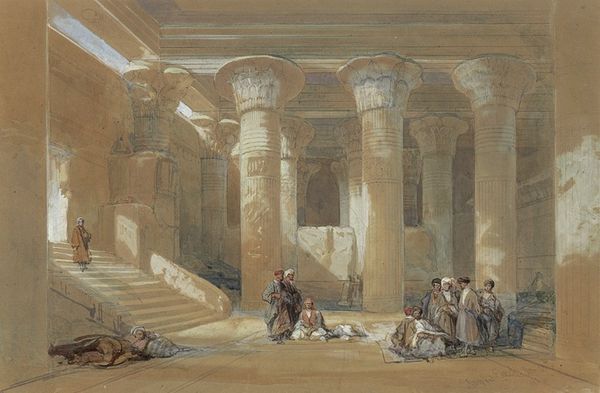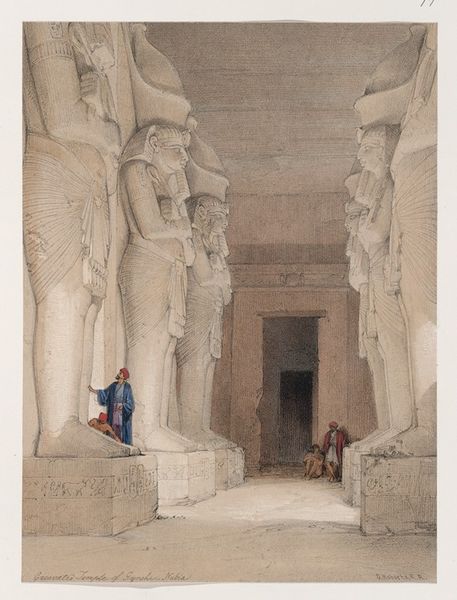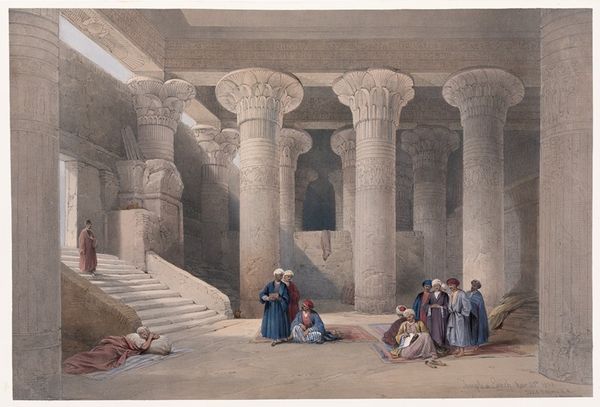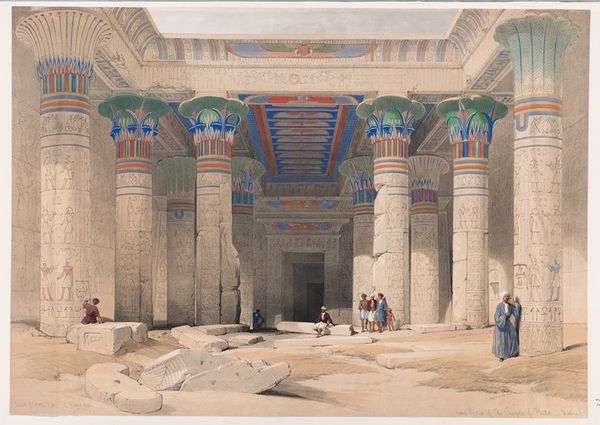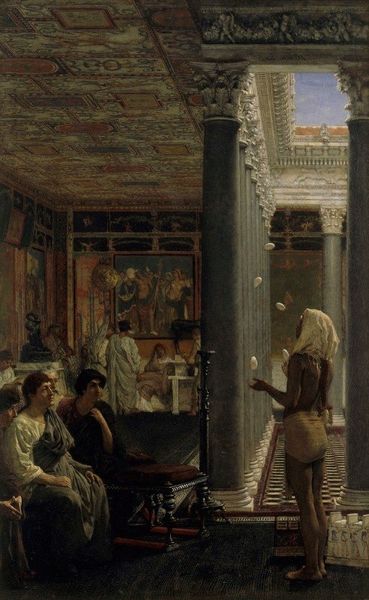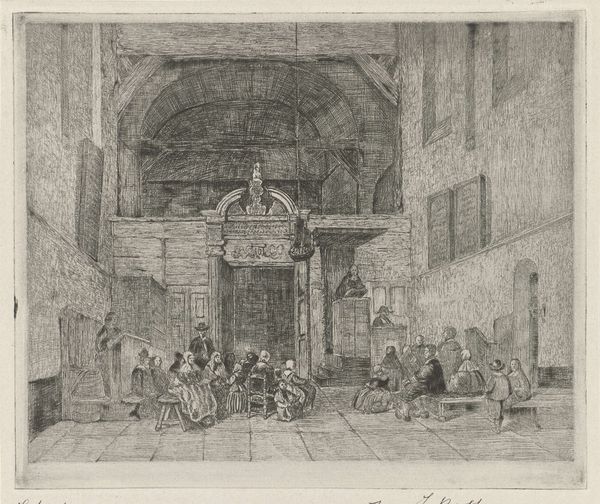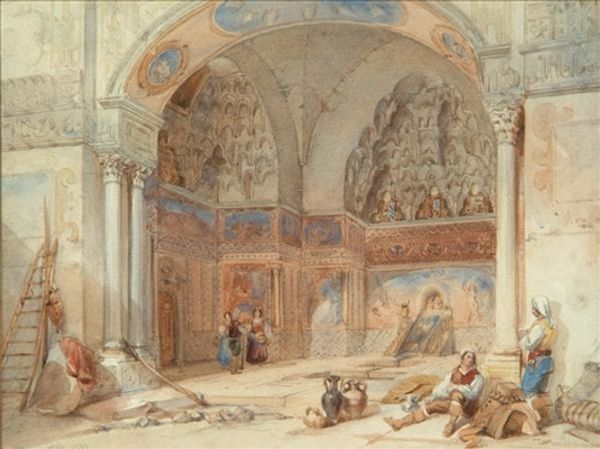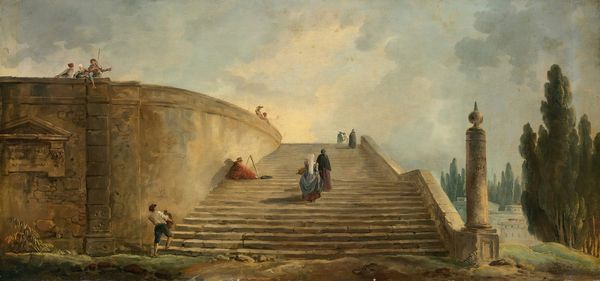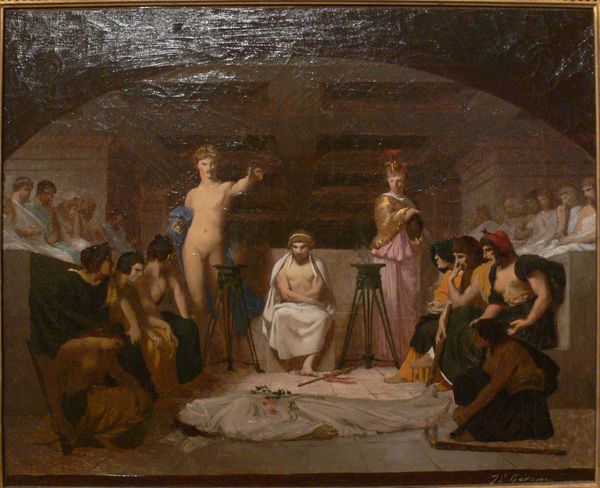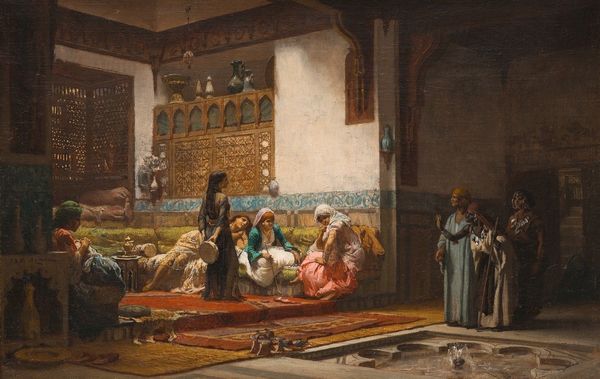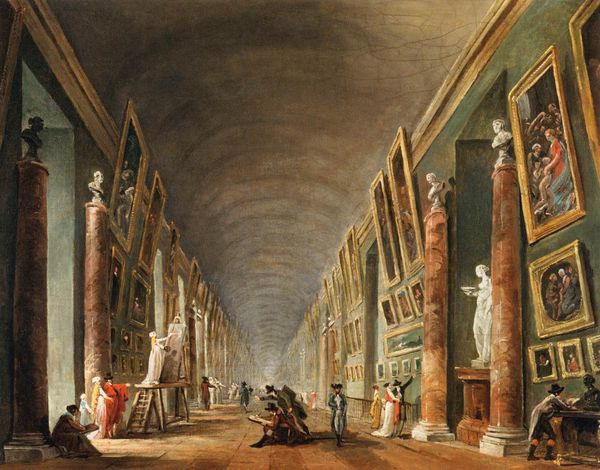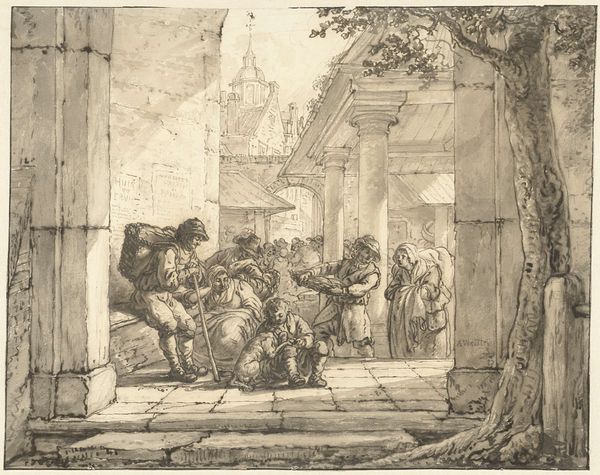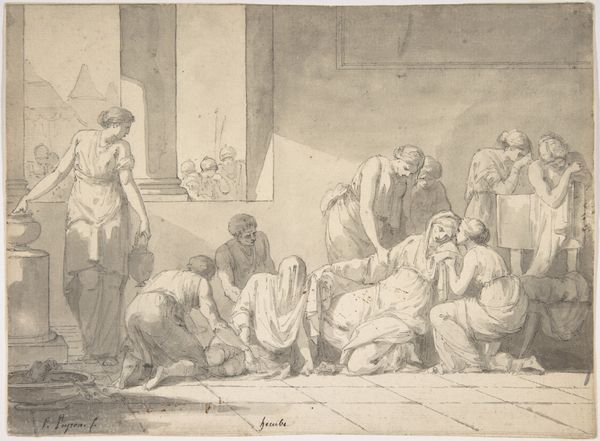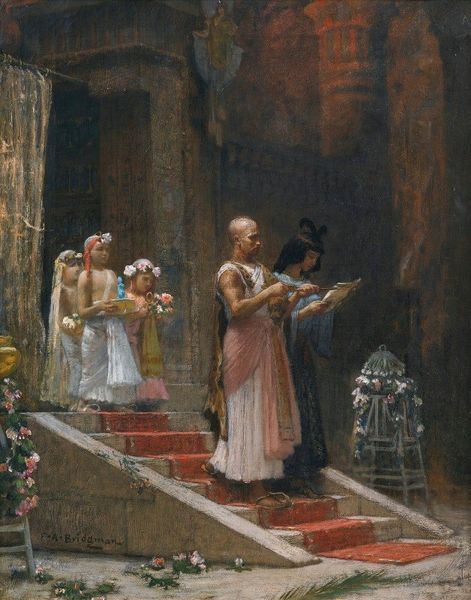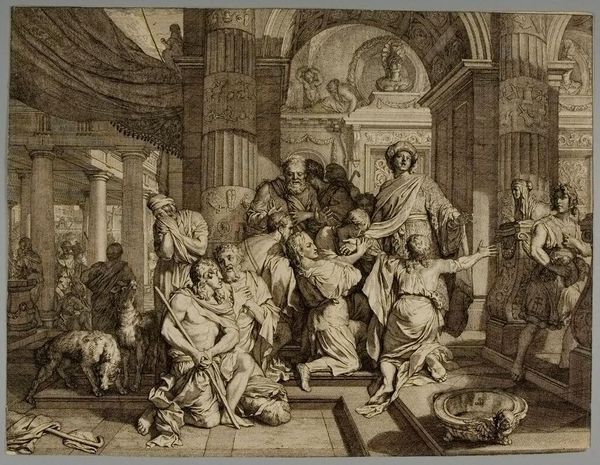
painting, watercolor, architecture
#
painting
#
landscape
#
watercolor
#
ancient-mediterranean
#
watercolour illustration
#
genre-painting
#
history-painting
#
mixed media
#
architecture
Copyright: Public Domain: Artvee
Curator: Oh, the scale of it! It’s overwhelming—and somewhat claustrophobic. All those towering figures seem to press down. Editor: Indeed. This watercolor, painted in 1849 by David Roberts, depicts the hypostyle hall within the Great Temple at Abu Simbel in Egypt. It offers a glimpse into a past interwoven with complex sociopolitical dimensions. Roberts was, in effect, participating in and perpetuating an Orientalist gaze. Curator: I see what you mean about the gaze, but let’s not dismiss the painting's formal qualities too quickly. Look at how Roberts uses light to guide the viewer's eye, creating a recession into space and revealing the intricate details of the colossal statues. It's a very skillful piece of compositional design, using perspectival devices to generate the illusion of depth. Editor: Of course, but the artist’s focus wasn't solely about aesthetics; it’s also deeply embedded in power dynamics, wouldn’t you say? The people, presumably locals, are dwarfed by the sheer size of the ancient temple, suggesting the subjugation and reverence—or maybe the artist's intended impression of subjugation and reverence—felt toward ancient Egyptian power. Note how the artist renders the indigenous population, too, in almost anecdotal terms, set against the permanence and majesty of these dominating artifacts. Curator: From my perspective, this serves the function of scale. And look closely at the architecture, the rhythmic repetition of the pharaonic figures and their imposing forms. Consider the visual weight each one of them carries in the image as a whole, almost creating an environment that threatens to crush the viewer—it conveys immensity brilliantly. The details in the ceiling panels are beautifully rendered, also. Editor: Agreed. And considering its construction under Ramses II, and its later rediscovery… Think of how Roberts is presenting this space to a Western audience, imbuing it with the exoticism so valued during that period and further cementing colonial hierarchies in artistic representation. Even the artistic medium of watercolour, which renders details and colors almost fleetingly, feels important in this context. Curator: Your contextual interpretation opens many doors to thinking about this work! Ultimately, I am still amazed by the technique that achieves this atmospheric depth and visual complexity, using nothing but watercolour and skillful design. Editor: And hopefully, that's one step in understanding art’s multifaceted dialogue with the world. It shows how visual representation is as much a matter of power as it is of form and colour.
Comments
No comments
Be the first to comment and join the conversation on the ultimate creative platform.
